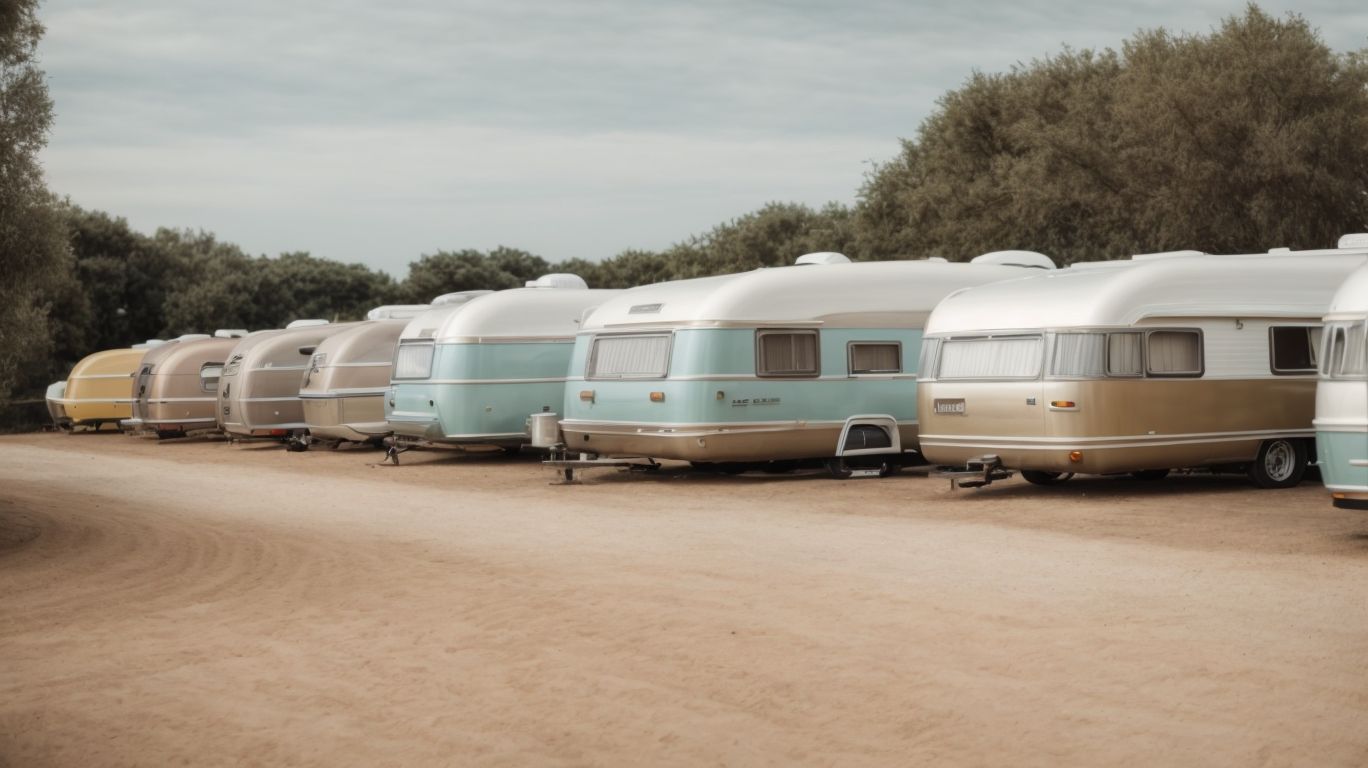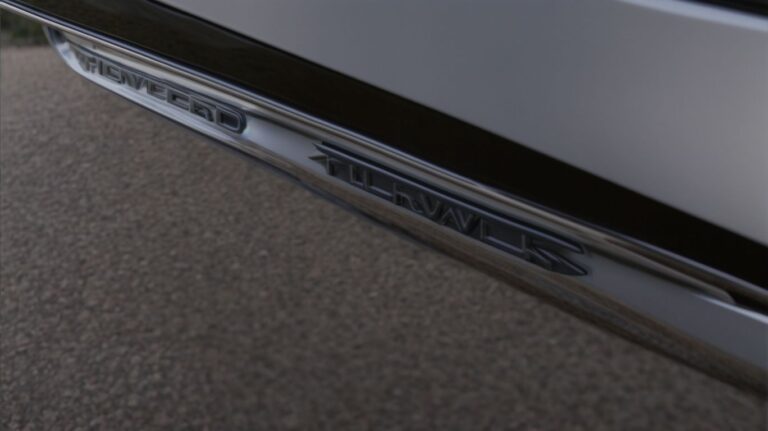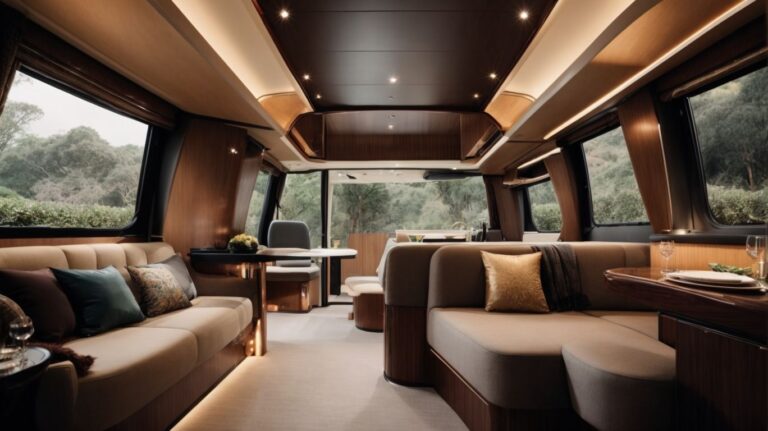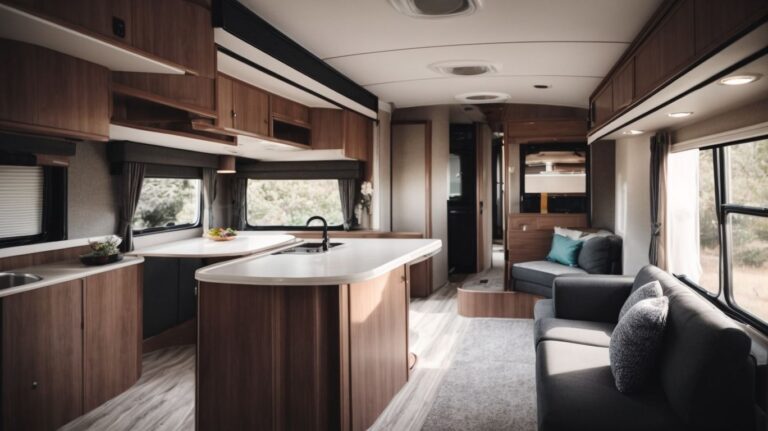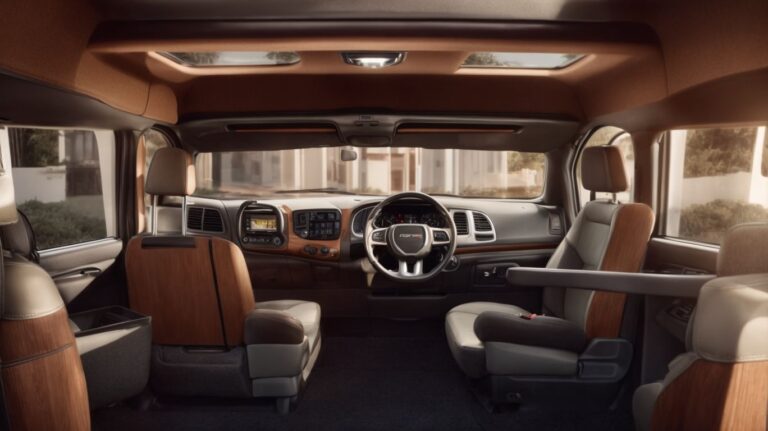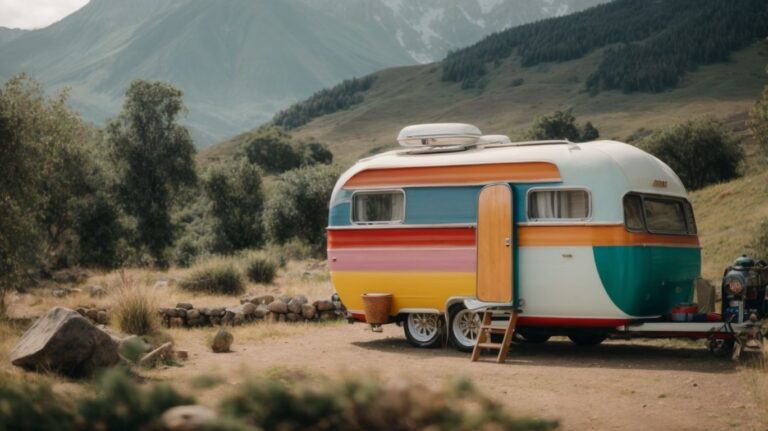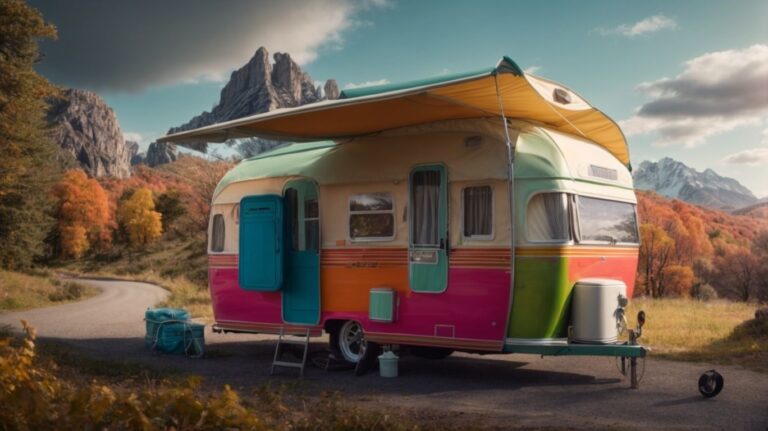Choosing the Right Caravans with Self-Leveling Systems
Are you in the market for a caravan with self-leveling systems but unsure where to start?
In this comprehensive guide, we will explore the benefits of caravans equipped with self-leveling systems, the different types available, how these systems work, and what factors to consider when making your selection.
From ease of set-up to enhanced safety and maintenance requirements, we will cover everything you need to know to make an informed decision.
So sit back, relax, and let’s dive into the world of caravans with self-leveling systems!
Key Takeaways:
What Are Caravans with Self-Leveling Systems?
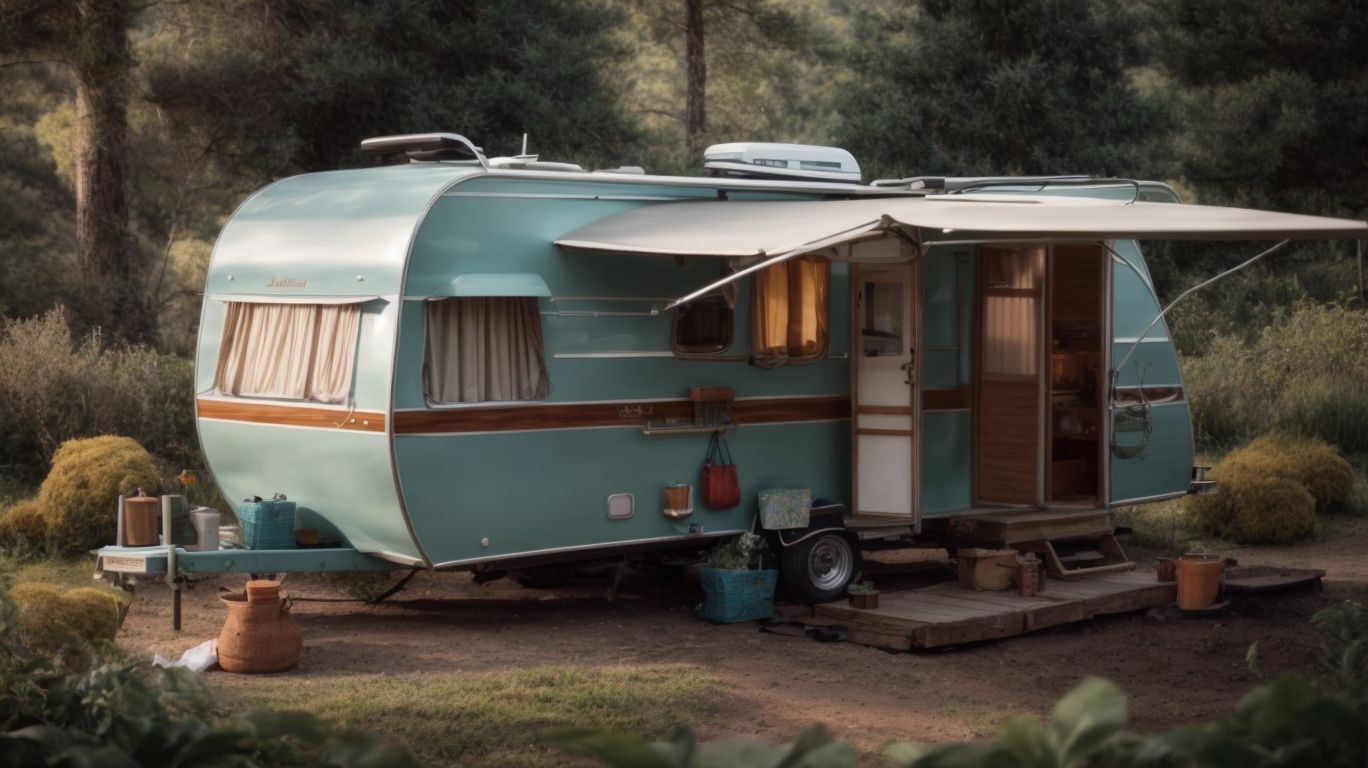
Credits: Motorcaravanning.Com – Benjamin Nelson
Caravans with self-leveling systems are innovative vehicles equipped with advanced technology to automatically adjust and maintain a level position, ensuring optimal comfort and stability for caravanners during their travels.
These innovative caravans utilize self-levelling devices to detect any uneven terrain or slopes and respond by adjusting the suspension to keep the vehicle level. This technology is especially beneficial when setting up camp, as it eliminates the need for manual leveling blocks or ramps, saving time and effort.
The self-levelling systems in these caravans work seamlessly to provide a smooth and hassle-free experience for travelers, allowing them to focus on enjoying their journey without worrying about uneven ground causing discomfort or instability.
What Are the Benefits of Caravans with Self-Leveling Systems?
Caravans equipped with self-leveling systems offer caravanners a multitude of benefits, including enhanced comfort, improved safety, and superior stability, making them a popular choice for travelers seeking a seamless and enjoyable journey.
One of the key advantages of caravans with self-leveling systems is the ability to maintain a consistent and level living space even on uneven terrain. This ensures that occupants can move around inside the caravan without feeling the disruptions of an unsteady surface. The sophisticated technology behind these systems automatically adjusts the vehicle’s height, providing a smooth and balanced environment regardless of the campsite conditions.
The safety aspect cannot be overlooked. A stable caravan reduces the risk of accidents caused by tipping or swaying, providing peace of mind to travelers, especially when navigating challenging roads or in adverse weather conditions. The enhanced stability also contributes to a more secure environment for sleeping, cooking, and other activities on the road.
Ease of Set-Up
One of the primary benefits of caravans with self-leveling systems is the ease of set-up, as the installation process is streamlined and efficient, reducing the time and effort required for caravanners to prepare their vehicle for use.
These self-leveling systems eliminate the need for manual adjustments, making it incredibly convenient for users. The automated leveling process ensures a stable and comfortable base, enhancing the overall camping experience. Caravanners can save valuable time that would otherwise be spent on tedious leveling tasks.
Cost-effectiveness is another key advantage, as the initial investment in a self-leveling system can often lead to long-term savings by reducing maintenance and potential damage to the caravan. The simplicity and speed of the setup procedure make these systems highly desirable for both novice and experienced campers alike.
Improved Stability
Caravans with self-leveling systems provide improved stability by automatically adjusting to uneven terrain, minimizing sway, ensuring enhanced comfort for passengers, and maintaining the vehicle’s payload distribution for a smoother travel experience.
These sophisticated systems utilize sensors and hydraulic mechanisms to detect and counteract any lateral shifts in the caravan’s position, offering a more level and steady ride. This not only enhances passenger comfort by reducing the effects of bumps and dips in the road but also minimizes the ‘sea-sick’ feeling often associated with excessive lateral movement. In addition, the optimized payload distribution achieved through self-leveling systems results in safer driving conditions and extends the lifespan of the caravan’s components by alleviating stress on the chassis.
Increased Comfort
Caravans equipped with self-leveling systems offer increased comfort to passengers by providing a stable and level environment, reducing discomfort from uneven terrain, and ensuring a more pleasant travel experience for all occupants.
These innovative systems utilize sensors and hydraulic mechanisms to automatically adjust the caravan’s leveling, minimizing the impact of slopes or bumps on the road. By maintaining a steady, flat position, self-leveling systems create a more relaxing ambiance inside the caravan, allowing passengers to move freely, sleep comfortably, and enjoy their journey without disturbances. The enhanced stability and level conditions also contribute to better safety on the road, reducing the risk of accidents and improving overall travel satisfaction.
Enhanced Safety
Caravans with self-leveling systems offer enhanced safety by providing a stable platform that minimizes swaying, reduces the risk of pitch or roll on uneven surfaces, and ensures a secure and controlled travel environment for caravanners.
These systems utilize advanced technology to automatically adjust the caravan’s suspension, keeping it level and stable regardless of changing road conditions. By reducing the chances of rollovers and loss of control, self-leveling systems greatly enhance the overall safety of caravan journeys. They contribute significantly to reducing driver fatigue and passenger discomfort by minimizing the constant corrections needed to maintain stability, leading to a more relaxed and enjoyable travel experience.
What Are the Different Types of Self-Leveling Systems?
Self-leveling systems for caravans come in various types, including manual systems that require user intervention, semi-automatic systems that combine user input with automated functions, and fully automatic systems that operate independently to maintain the vehicle’s level position effortlessly.
Manual self-leveling systems for caravans involve the manual adjustment of leveling jacks or blocks to achieve a balanced position. On the other hand, semi-automatic systems offer a middle ground by allowing users to initiate the leveling process while automated mechanisms take over for precise adjustments. Fully automatic systems utilize hydraulic or motor mover technology to continuously monitor and adjust the caravan’s position without requiring any input from the user.
Manual Systems
Manual self-leveling systems in caravans require user input to adjust the vehicle’s position using jacks or pressure-based mechanisms, offering caravanners a hands-on approach to leveling their vehicle based on personal preferences and terrain conditions.
These manual systems grant users a sense of control over the leveling process, allowing them to fine-tune adjustments to achieve optimal stability and comfort.
By manipulating the jacks or adjusting the pressure in the system, caravanners can ensure that their vehicle remains level, even on uneven surfaces.
The flexibility of manual systems enables users to customize the setup according to their specific needs, providing a tailored solution for each camping scenario.
Semi-Automatic Systems
Semi-automatic self-leveling systems combine automated functionality with user intervention, utilizing sensors and gyroscopes to assist in leveling the caravan while allowing caravanners to adjust settings based on personal preferences and terrain requirements.
These innovative semi-automatic systems provide a seamless experience for caravan owners, ensuring a swift and accurate leveling process with minimal effort. The integration of sensors and gyroscopes enables the system to detect any discrepancies in the caravan’s position and automatically make adjustments to achieve a perfectly horizontal orientation.
The user-friendly interface allows caravanners to fine-tune the settings, providing a personalized touch to the leveling process. This level of automation combined with user control not only enhances convenience but also ensures precise leveling tailored to individual needs.
Fully Automatic Systems
Fully automatic self-leveling systems in caravans operate autonomously, utilizing advanced technology to predict and adjust the vehicle’s level position without user intervention, ensuring seamless adaptation to varying terrains, ramps, and gradients for optimal stability.
These sophisticated fully automatic systems incorporate sensors and actuators that constantly monitor the caravan’s orientation and make real-time adjustments to ensure a perfectly horizontal position. By integrating level prediction algorithms, they can anticipate changes in the terrain and preemptively counteract any potential tilting, providing a smooth and safe experience for occupants. This cutting-edge technology elevates the overall journey experience by reducing the hassle of manual leveling and enhancing the overall comfort during stops and stays.
How Do Self-Leveling Systems Work?
Self-leveling systems in caravans typically utilize hydraulic pumps powered by onboard batteries to adjust the vehicle’s position automatically, relying on gyroscope technology and pressure sensors to maintain levelness and stability during travel.
As the caravan is in motion, the hydraulic pump activates to regulate the level of the vehicle by adjusting the pressure in the leveling jacks. The onboard batteries provide the necessary power to operate the system seamlessly without the need for external power sources. The gyroscope technology plays a crucial role in detecting any tilting or unevenness in the caravan’s position, sending signals to the control unit to make real-time adjustments. Sophisticated sensor technologies continually monitor the caravan’s orientation and make micro-adjustments to ensure a smooth and stable ride, enhancing comfort and safety for occupants.
What Factors Should Be Considered When Choosing a Caravan with Self-Leveling Systems?
When selecting a caravan equipped with self-leveling systems, caravanners should consider factors such as their budget, the weight and size of the caravan, the type of terrain they plan to traverse, the level of automation desired, and additional features that enhance convenience and comfort during travel.
A crucial aspect to keep in mind is the range of budgets available as self-leveling systems can vary greatly in cost. It’s essential to find a system that meets your needs without exceeding your financial boundaries. Considering the caravan specifications entails understanding how the weight and dimensions of the vehicle interact with the self-leveling mechanism.
Ensuring compatibility with the terrain you intend to explore is paramount for a smooth journey. Some self-leveling systems may perform better on rough terrain compared to others, so evaluate this factor carefully before making a decision.
Budget
Budget plays a crucial role in selecting a caravan with self-leveling systems, as caravanners need to assess the overall cost, including the installation expenses and system price, to determine the affordability and value of the investment.
When considering the budget aspect, it’s essential to evaluate the installation expenses, which can vary depending on the complexity of the self-leveling system and the labor costs involved.
The price of the system itself is a key factor to weigh against the features and functionalities it offers. It’s recommended to compare different models and brands to find a balance between quality and cost-effectiveness.
By carefully analyzing the budget implications, caravanners can make an informed decision that aligns with their financial constraints and preferences.
Weight and Size of Caravan
The weight and size of the caravan are critical factors to consider when opting for a self-leveling system, ensuring that the chosen system can accommodate the caravan’s payload and user requirements without compromising performance or safety.
When assessing the caravan’s weight, it is essential to determine the maximum weight the self-leveling system can support to avoid any issues during operation. Payload compatibility is crucial in maintaining the stability and efficiency of the system. Considering user payload requirements such as the number of occupants, luggage, and other equipment is vital for a smooth and safe travel experience.
Type of Terrain
The type of terrain that caravanners plan to traverse influences the choice of a self-leveling system, as different terrains like steep gradients or uneven surfaces may require specific features to mitigate sway and ensure stability during travel.
When dealing with steep gradients, a self-leveling system equipped with advanced sensors and actuators becomes crucial, as it can quickly adapt to the changing angles and keep the caravan balanced. Systems that offer sway reduction features are highly recommended for terrains with significant variations in elevation, as they help counteract the lateral movement caused by uneven surfaces.
The ability of a self-leveling system to handle varying terrain conditions seamlessly can enhance the overall comfort and safety of the caravan occupants, making the journey more enjoyable and stress-free.
Level of Automation
Caravanners need to determine the desired level of automation in the self-leveling system, ranging from manual adjustments to remote-controlled operations, based on their preferences for convenience, ease of use, and system interaction while traveling.
Manual adjustments offer the advantage of having more control over the leveling process, as users can fine-tune the settings according to specific needs. On the other hand, opting for remote control features provides the convenience of adjusting the system settings from a distance, which can be particularly useful in situations where quick adjustments are required without physically being near the caravan.
Additional Features
Caravanners should also consider additional features like brackets for stability, adapters for compatibility, and warranty coverage for peace of mind when selecting a caravan with self-leveling systems, ensuring a comprehensive and reliable travel solution.
Stability-enhancing brackets play a crucial role in maintaining the balance and security of the caravan during leveling processes, offering stability even on uneven terrain or inclines.
Compatibility adapters ensure that the self-leveling system seamlessly integrates with various caravan models, eliminating the hassle of finding suitable components for installation.
Regarding warranties, thorough coverage ensures protection against potential malfunctions or issues, providing reassurance to owners regarding the longevity and performance of their investment.
What Are the Maintenance Requirements for Caravans with Self-Leveling Systems?
Maintenance for caravans with self-leveling systems involves regular care and upkeep of the hydraulic components, battery systems, and sensor technologies to ensure optimal performance, stability, and safety throughout the vehicle’s lifespan.
Regular maintenance of hydraulic components is crucial to prevent leakage and ensure the smooth operation of the self-leveling system. It is recommended to check for any signs of hydraulic fluid leaks, inspect hoses for wear or damage, and top up the fluid level as needed to maintain proper functionality.
Regarding the battery systems, routine inspection and timely replacement of batteries are essential for seamless operations. Ensuring the batteries are properly charged and securely connected is vital to avoid potential malfunctions in the self-leveling system.
Moreover, calibrating sensors regularly is necessary to maintain accuracy in leveling operations. Dust, dirt, or debris accumulation can interfere with sensor readings, impacting the system’s performance. Cleaning sensors and conducting calibration checks are integral upkeep tasks for optimal functionality.
What Are Some Popular Brands of Caravans with Self-Leveling Systems?
Several renowned brands in the caravan industry offer models with integrated self-leveling systems, such as E&P Hydraulics, Emove, and Buccaneer Galera, providing caravanners with reliable options backed by quality craftsmanship and innovative features.
These brands have gained recognition for their commitment to enhancing the camping experience through cutting-edge technology and unparalleled convenience. E&P Hydraulics, for instance, is known for its precision-engineered hydraulic leveling systems that ensure a stable and perfectly balanced setup in minutes, without the hassle of manual adjustments.
Emove, on the other hand, offers intuitive self-leveling solutions that cater to a wide range of caravan sizes, catering to the diverse needs of modern travelers seeking comfort and ease of use. Buccaneer Galera stands out for its sophisticated design and attention to detail, elevating the standards of luxury and functionality in each caravan model equipped with their self-leveling systems.
Frequently Asked Questions
What is a self-leveling system in a caravan?
A self-leveling system in a caravan is a hydraulic or electric system that automatically adjusts the leveling of the caravan to ensure stability and comfort while parked on uneven surfaces.
Why should I choose a caravan with a self-leveling system?
Having a self-leveling system in your caravan eliminates the need for manual leveling, saving you time and effort. It also ensures a more comfortable and stable experience while parked, preventing any potential damage to the caravan.
Are there different types of self-leveling systems for caravans?
Yes, there are two main types of self-leveling systems for caravans: hydraulic and electric. Hydraulic systems use a pump and cylinders to adjust the leveling, while electric systems use motors and sensors.
Which type of self-leveling system is better for a caravan?
It ultimately depends on personal preference and the specific needs of the caravan. Hydraulic systems are generally more expensive but are more durable and can handle heavier loads. Electric systems are easier to install and operate, but may not be as strong and reliable as hydraulic systems.
Can I install a self-leveling system on my existing caravan?
Yes, it is possible to install a self-leveling system on an existing caravan. However, it is important to consult a professional to ensure proper installation and compatibility with your specific caravan model.
Do all caravans with self-leveling systems have the same leveling capabilities?
No, different models and brands of caravans with self-leveling systems may have varying leveling capabilities. It is important to research and compare different options to find the one that best fits your needs and preferences.

